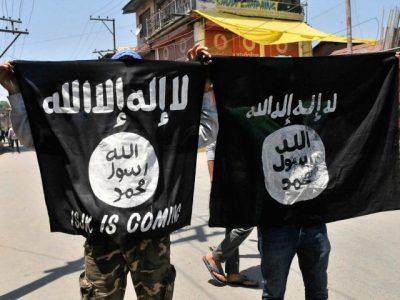
Islamic State claims control of Taliban district after clashes in Afghanistan
The Islamic State (ISIS/ISIL) alleges that it captured the opium-rich Chaprahr district in eastern Afghanistans Nangarhar province from the Taliban, following clashes between the two groups that left dozens dead, including a nine-year-old girl.
Citing the Islamic States (IS) Amaq News Agency, Voice of America (VOA) reports that the terrorist group issued a statement saying, overnight clashes for the control of Chaprhar [district] in Nangarhar province killed at least 10 Taliban fighters.
It added that three enemy fighters were captured alive while the rest fled the area. IS said both sides used light and heavy weapons in the fighting, adds VOA, referring to the statement.
Both sides suffered casualties, reports Afghanistans TOLO News, which provides a higher estimate for the number of people wounded and killed in the fight for the district.
At least 21 Taliban and seven Daesh [ISIS] insurgents were killed in ongoing clashes between the two groups in eastern Nangarhar province in the past two days, local officials claimed on Tuesday. In addition, nine other insurgents, from both sides, were injured, notes TOLO.
TOLO learned from Attaullah Khoghyani, a spokesman for the governor of Nangarhar, that the fight between the ISIS branch in Afghanistan, known as the Khorasan Province (ISIS-K), and the Taliban started in the wee hours of Sunday morning after ISIS jihadists attacked their Taliban rivals.
A nine-year-old girl was also killed during the clashes between the two sides and five other civilians were injured, revealed the provincial governors spokesman.
The Taliban has yet to comment on the incident.
ISIS-K is primarily active in the Achin, Kot, Nazyan, and Chaprhar districts of Nangarhar, notes TOLO.
In 2015, the United Nations reported that Chaprhar and Achin, considered by the U.S. military to be ISIS-Ks main regional base in Afghanistan, are among the main opium poppy cultivated districts in Nangarhar province.
Opium cultivation and production throughout Nangarhar increased the following year, placing the province among the top five most opium producing regions in Afghanistan, the worlds top supplier of opium and its deadly heroin derivative.
Achin is where the U.S. military recently dropped the Massive Ordnance Air Blast (MOAB) known as the mother of all bombs.
ISIS-K officially announced its presence in the Afghanistan-Pakistan region in January 2015, less than a month after former President Barack Obama declared an end to the U.S. combat mission, a move that was accompanied by a dramatic reduction in the American military footprint in the country.
President Donald Trump and NATO are considering deploying additional troops to the war-devastated nation amid the worsening security situation the sitting commander-in-chief inherited from his predecessor.
The Taliban and ISIS-K have been fighting one another for influence, resources, and territory in Afghanistan.
Both terrorist groups have claimed responsibility for a suicide attack Monday against an American military convoy in the Bati Kot district of Nangarhar.
Both the groups have released almost identical details about the damages through their official means of communication, claiming the blast left at least six U.S. soldiers dead, notes VOA, adding, The U.S. military confirmed the attack on a coalition convoy, but said there were no casualties and the incident occurred in the nearby Achin district, which is believed to be ISs main regional base in Afghanistan.
The U.S. military has said ISIS-K has been significantly degraded in the last few months, from a peak of as many as 3,000 jihadists to about 700 now.
ISIS-K is also believed to be operating beyond Nangarhar, in northern Afghanistan Jawzjan province.
Nangarhar-based cultivation and production of opium, used by the Taliban to generate up to 60 percent of its funding, has increased in the province since ISIS-K established its stronghold there despite claims by the jihadist group that it has eradicated the opium poppy crops.
The United Nations Office on Drugs and Crime (UNODC) has estimated that the value of the opium and its heroin derivative produced in Afghanistan was nearly $3 billion in 2013, up from $2 billion in 2012, reported the Special Inspector General (SIGAR), a U.S. watchdog agency, in October 2014.
In its most recent report to Congress, SIGAR notes that security conditions continue to deteriorate in Afghanistan, primarily at the hands of a resurgent Taliban, which remains the strongest jihadist group in the country.
Source: Breitbart





